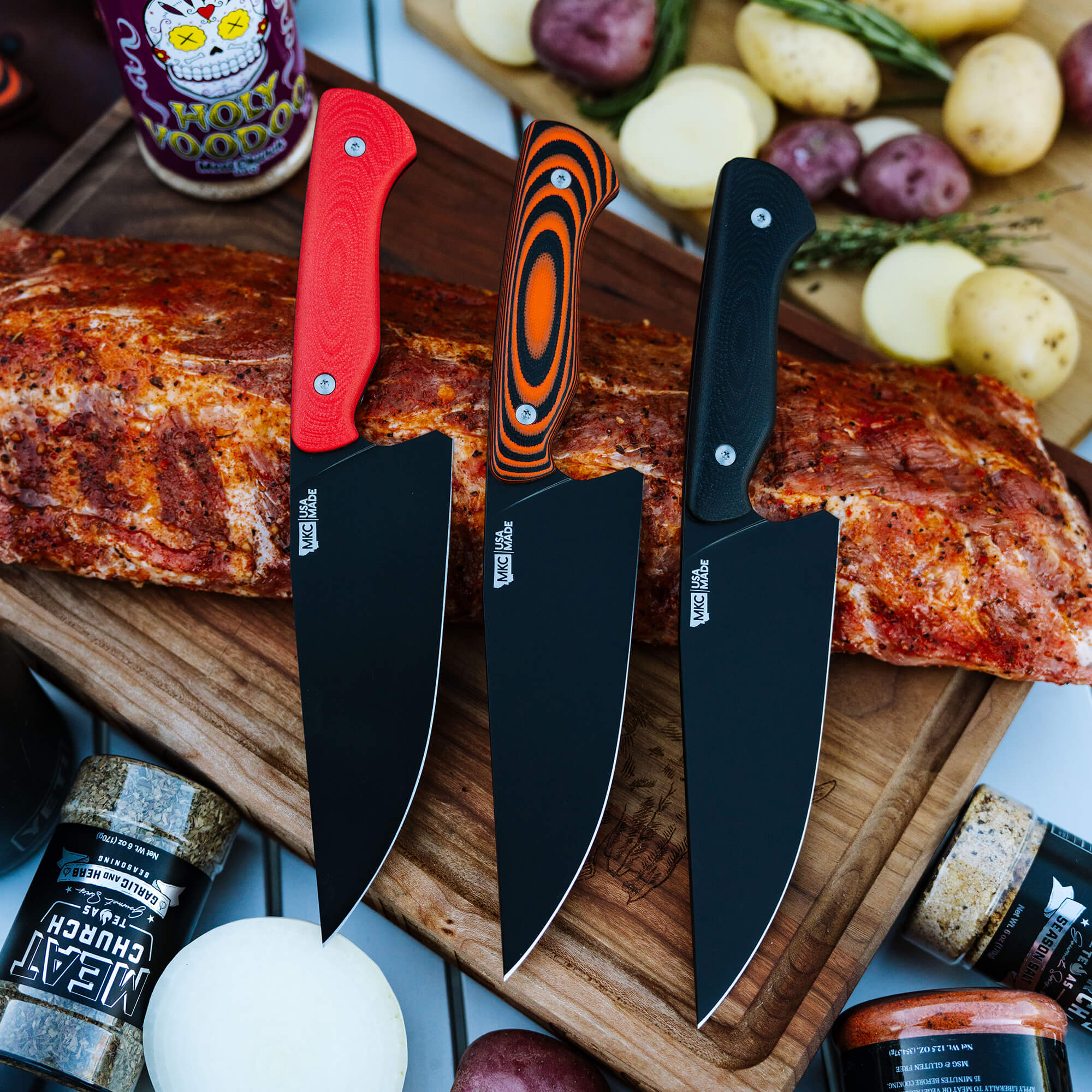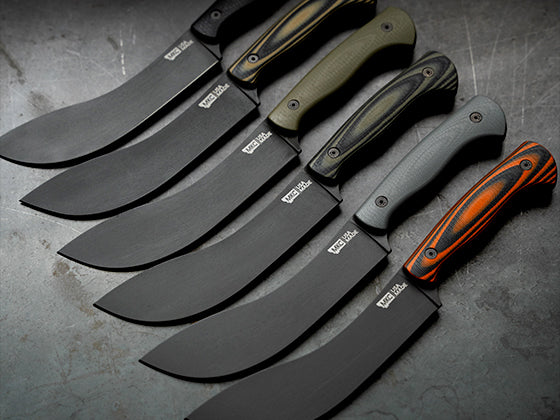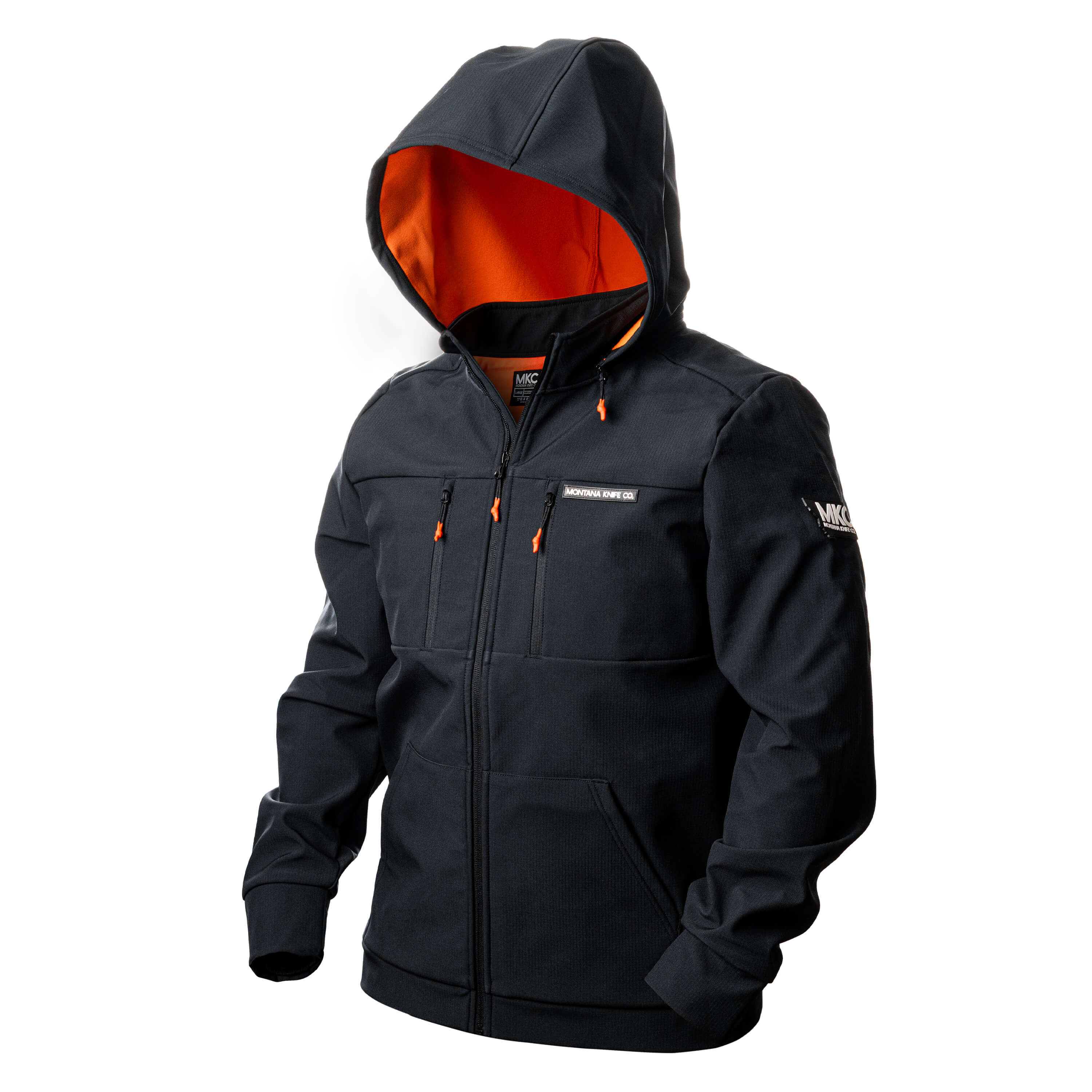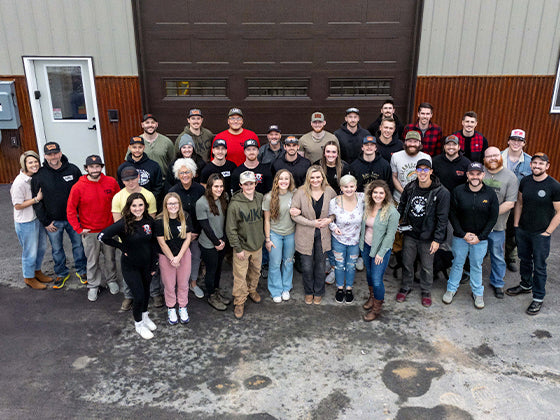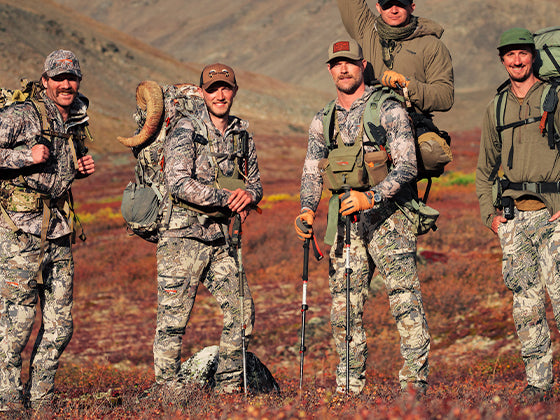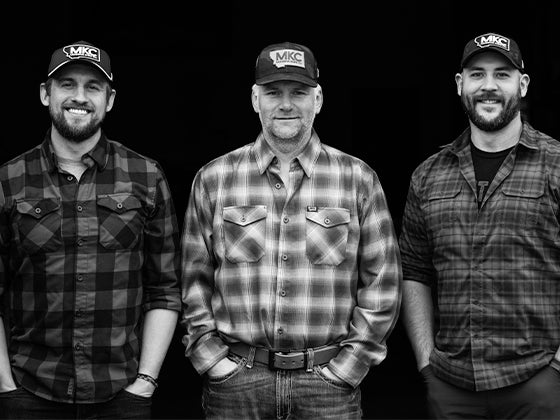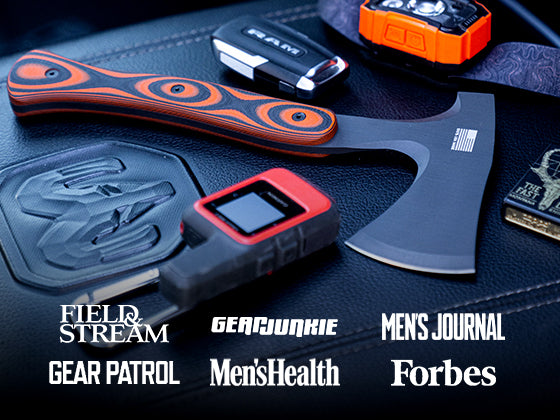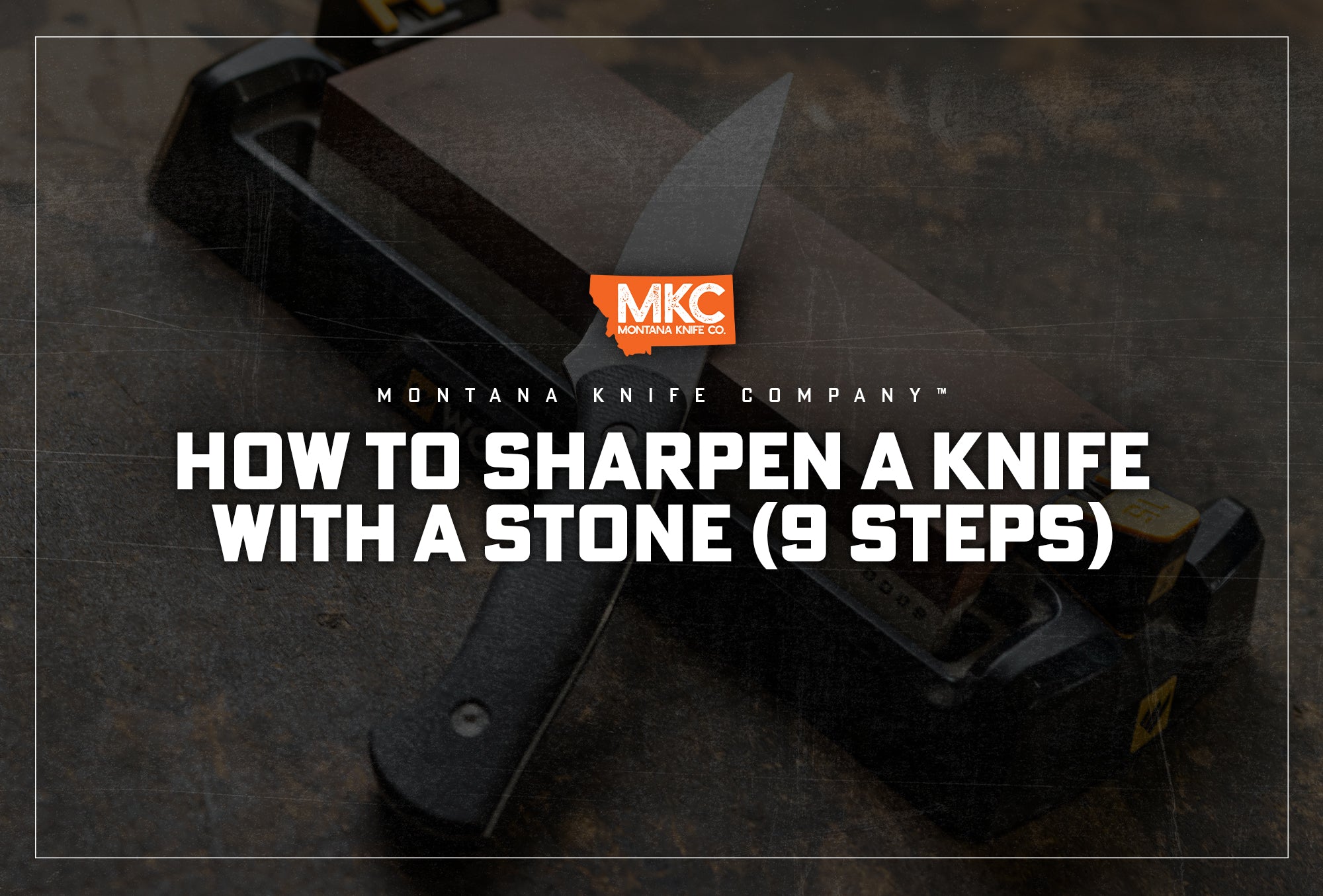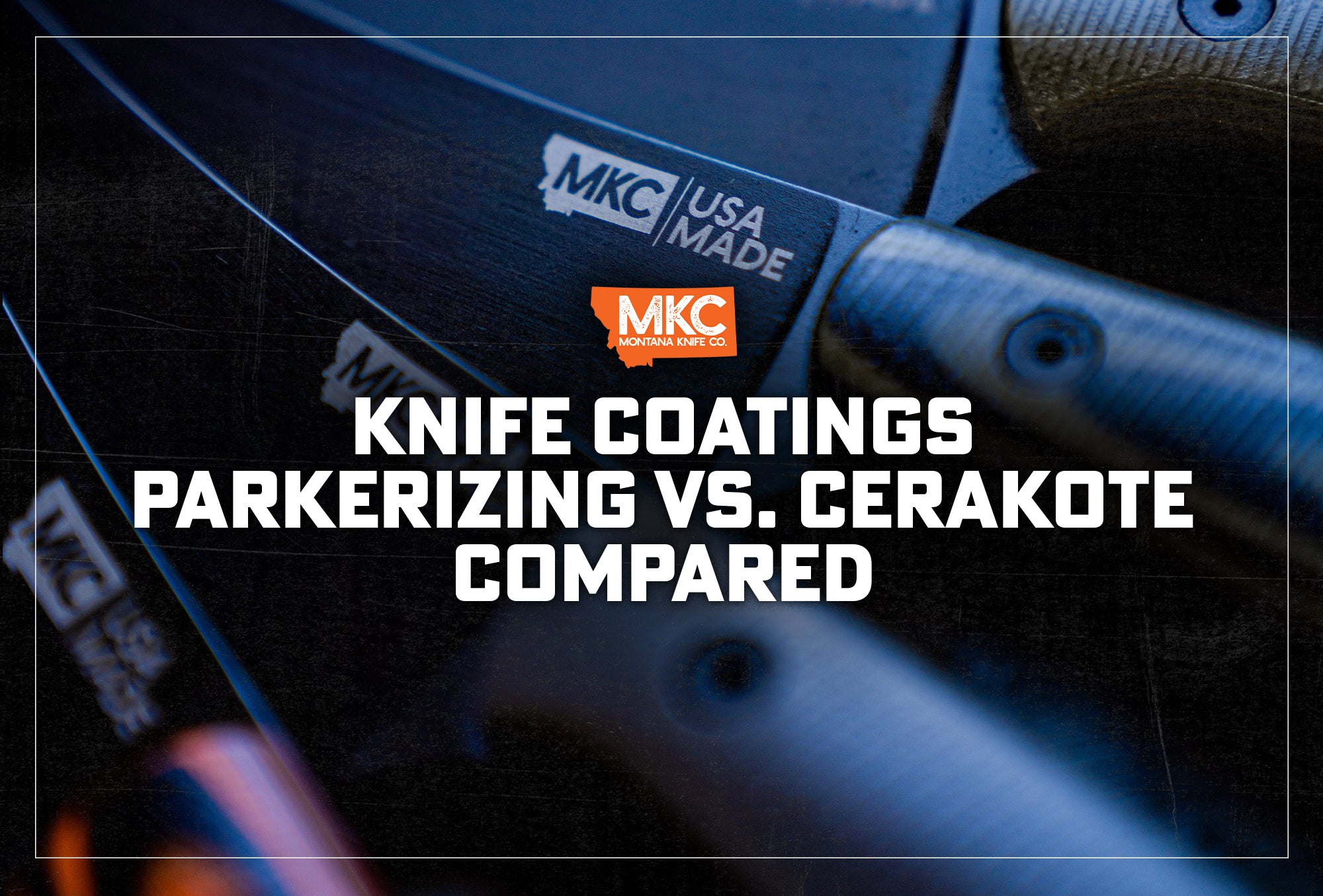If you’re new to MKC, you might look at our Speedgoat and Blackfoot blades and think they’re exactly the same, just with different handles.
It’s true that both models are similar in their weight, their dimensions, and the types of jobs they’re designed to do. But there are differences the discerning knife owner will appreciate.
Let’s compare these well-crafted knives and help you determine which one is right for your next hunting trip. It may seem like we’re splitting hairs. Fortunately, that’s a task either of these knives can handle with precision.

Blade Geometry
A disadvantage of purchasing any lightweight knife is that you’re essentially trading strength for weight. But many knives are completely overbuilt for the job they’re intended for. There’s plenty of strength in both the Speedgoat and Blackfoot blades to perform beautifully in the field. The Blackfoot is a little stronger than the Speedgoat, with a very slightly thicker blade.
That doesn’t mean the Blackfoot is made to be a pry bar, and it also doesn’t mean the Speedgoat can’t handle the same jobs as the Blackfoot.
The Blackfoot blade is about a quarter of an inch shorter than the Speedgoat, though the overall length of the knives is the same, making it just a bit easier to choke up on and control.
Both knives have a lot of tip, which is handy for caping out animals, going around the base of horns, working around tight skin, or cutting out the notoriously difficult tear ducts. (As someone who once worked in a taxidermist’s shop, I know how much of a pain those tear ducts can be, and I took that into consideration when crafting these blades.)
Comfort Handle vs. Paracord Wrap
The Speedgoat’s seven feet of 550 paracord is a great, adaptable feature. I often hunt a long way from my truck, and I recently had a bootlace break. Nothing’s worse than hiking back to your truck, for miles and miles, with no boot lace. Thankfully, I was able to restring my boot with the Speedgoat’s paracord.
If a windstorm blows through while you’re out camping, the Speedgoat gives you a little extra paracord to tie down your tent. You can also use it to hang meat in a tree away from bears and mountain lions, or you can tie up the horns of the trophy you shot to your pack so they’re not flopping around during your hike back. If you’re dressing out an elk all by yourself, you can keep that cavity open with the paracord and a tree to better manage the animal.
You can do all that while still using the knife blade of the Speedgoat, and it will still fit into its sheath without the cord handle. This is a knife that works well in the hand with or without the paracord.
Another benefit of the handle is that it allows the Speedgoat to lay flat against your body without protruding. If you’re an officer, say, carrying the Speedgoat on your vest, it will lay very flat and won’t be cumbersome. If you’re a hunter, the Speedgoat will lay flat against your pack and won’t get hung up on your gear.
However, that paracord can become a pain when it gets bloody and dirty. And, of course, you have to rewrap the handle if you use the paracord. We designed the Speedgoat to be easily rewrapped so you can do it yourself. But you can always take advantage of the MKC Generations program and send it to us — we’re happy to clean it up, rewrap it, and even sharpen your blade for free.
The handle of the Blackfoot is thicker and sticks out a little more, but that comes with more handle to grip for those with larger hands. The Blackfoot gives you a little more to hold onto and fills up your hand a little better. If you’re applying a lot of pressure for an extended period of time, you’ll have less of a chance of getting blisters or hot spots with the Blackfoot than with the Speedgoat.
Overall Weight and Feel
“It’s so lightweight!” is the feedback I hear most often from new Speedgoat buyers. Both the Speedgoat and the Blackfoot are very light for their size, but at only 1.7 ounces, the Speedgoat is ultra light.
However, the Blackfoot is still quite light compared to anything else on the market that’s similar in size. If you’ve never used the Speedgoat, you’ll think the Blackfoot is the lightest knife you’ve ever held.
If you’re concerned about weight and counting ounces in your pack, go with the Speedgoat. If you’re not worried about weight, go with the Blackfoot.
Conclusion: Which One Is Right for You?
When customers ask me which knife they should choose, I always ask them what kind of hunter they are and what kinds of jobs they do.
The Blackfoot is great for heavy work and for situations where you’ll need to apply a lot of pressure for longer — carving wood, for instance. But for simpler jobs where you’re interested in carrying light, go with the Speedgoat.
It’s hard to go wrong with either knife, but I hope these subtle differences make your decision a little easier.
by Josh Smith, Master Bladesmith and Founder of Montana Knife Company

